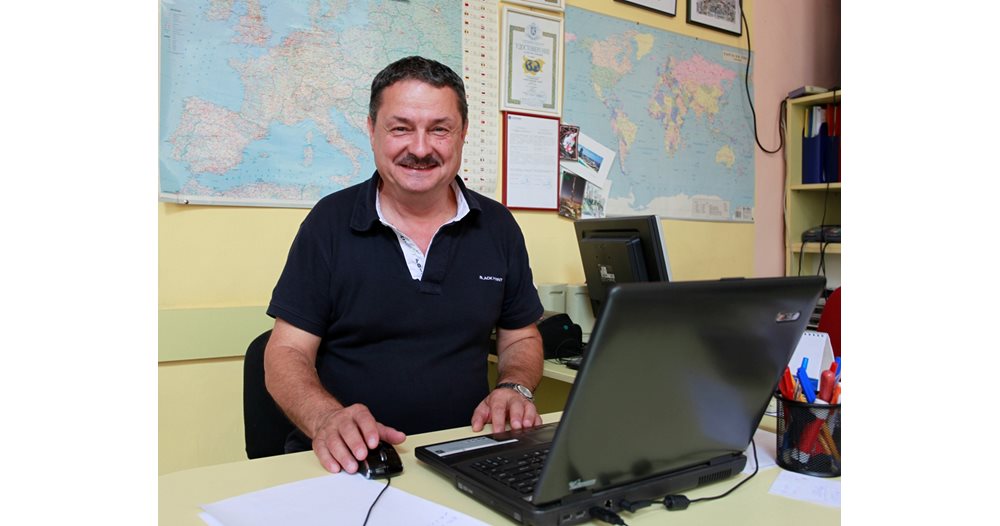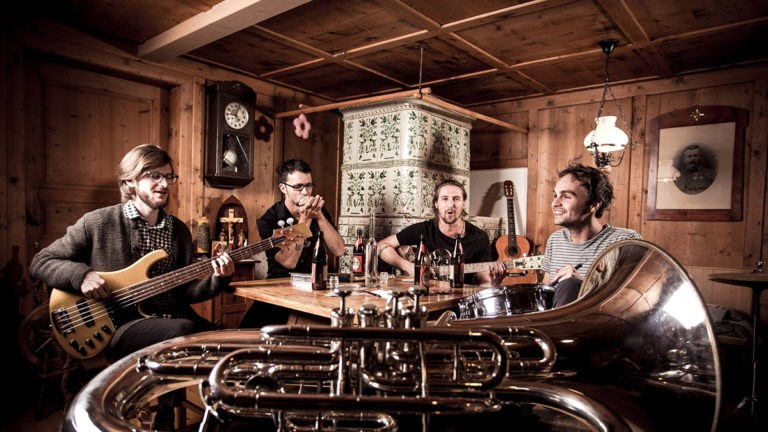- By the end of September, it will be a sea – it already is, and I remember how in the 1980s, after September 9, the Black Sea season ended, says the climatologist
- Due to 2 heat waves in Western Europe in 2003, 70,000 people died prematurely because there were no air conditioners in the old people’s homes.
- In “Mladost” is the village 2-3 degrees cooler than in the center of Sofia – because of concrete, asphalt and sheets
- If it’s warm in the hot springs, the winter will be bitter – the popular belief is no longer valid, the winters are mild and with little snow
– Prof. Rachev, an infernal heat has engulfed Western Europe, will the relentless heat come to us?
– The hot period in Bulgaria starts today. So far it was the warm-up. We were on the fringes of this heat ridge that swept across Western Europe and where quite a few records happened. On Tuesday, the temperature in London reached 40 degrees for the first time in the history of Great Britain. This is a degree and a half more than the previous record, which was set on July 25, 2019 in Cambridge – 38.7 degrees. This is the third, and for some countries, the fourth serious heat wave that has flooded Western Europe since the end of May. These waves are quite long and because of them more than 1000 people lost their lives not in time. It is very rare to die from heat, but especially the elderly are very sensitive, they have chronic diseases that heat unlocks and intensifies. I want to remind curious readers that due to two very long heat waves in 2003 in Western Europe, 70,000 people died prematurely – mainly French, Germans, but also people from Belgium, the Netherlands and Luxembourg. Back then, nursing homes didn’t have air conditioners yet. Since then, there have been no such startling numbers of deaths. Now things are happening again, but the waves are relatively shorter and there is already prevention so that these nursing homes do not become unbearably hot.
Fires are the other scourge known in Europe. This is not the first time there have been fires in France, Portugal and Germany. Not to mention Greece, Turkey, Italy and the entire Adriatic coast. Bulgaria is entering another, but this time quite significant, heat wave and the danger of fires is increasing sharply. There have been fires in our country, and there will be, because the surface layer of the soil is practically dry – up to about 10 centimeters deep, there is no moisture at all. Everything is dry, the active harvest begins, and unreasonable human behavior is terribly risky. In the heat with little wind, lighting an outdoor fire is an invitation to fire. We continue to take nature lightly. A small flame in the heat and in the dry grass is literally playing with fire. In any case, we will have local fires, as there were near Kazanlak these days. The Struma gorge is very sensitive because everything is dry. And I say again, the active field work of harvesting the wheat has begun. God forbid there be another madman to set fire to the stubble.
– What will happen to the temperatures?
– They will gradually rise and on Saturday and Sunday in most of the country they will be between 35 and 38-39 degrees. It is possible that the temperatures will reach 40 degrees in places along the Danube and in the Upper Thracian plain. However, this is not something fantastic, because the records are much higher – 4-5 degrees more than what we will observe. I will remind you that the maximum temperature in Sofia is 40.2 degrees. It was measured on July 5, 2000. On the same date, the current absolute temperature record in Bulgaria was measured – 45 degrees in Plovdiv. These are the maximum maximum values that the temperature can reach in Bulgaria.
After the very warm and dry wave after Sunday, a slight cooling is expected with a temperature drop of 2 to 4 degrees. From Monday, however, the transfer of warm air from the south will start again and the temperatures on Tuesday in Plovdiv, for example, will be firmly above 35 degrees until the end of the month.
– What will be the weather of the hot weather – July 28, 29 and 30?
– On these three days, folk meteorology used to say what the winter would be like. If it is warm, hot and dry on the 28th, then December will be cold. During these three days this year, the temperature in Plovdiv will be 35-36 degrees, in Sofia – 32-34 degrees. If popular beliefs are true, a cold and bitter winter awaits us. However, nothing like that has happened in the last 8 years. This belief was valid a century, a century and a half ago. There’s no way it’s valid nowadays. Winters in Bulgaria are already mild, with a lot of snow in the mountains, but very little snow in the plains. Most of the precipitation is now rain or mixed rain and snow. The old sleeps of that time that we talk about and that I remember, because that’s my job, are gone. If there happens to be more snow somewhere, it’s for a day, two or three, and then things are back in bounds. It is getting warmer and warmer all over the Earth. Such heat is not only reported in Europe. In the Persian Gulf region, where Kuwait and Iraq are, the maximum temperatures by the end of the month will reach 47-48, and even 50 degrees. Given that morning temperatures before sunrise, when it is supposed to be the coolest, will be around 35 degrees. And people live there! The ice in the Arctic Ocean is at a minimum amount since 2000. We note the absolute minimum since meteorological observations have been made. There is no year in which there has been less ice in the seas around Antarctica. Even Antarctica, thought to be the litmus test for climate change, is warming.
– How much did the temperature rise?
– In recent years, Antarctica has seen a separation in terms of temperature. The western part, which faces Argentina and Chile, has warmed by about 1.5 degrees over the past 20 years. In the eastern part, which is high and has the largest ice with a thickness of 4 kilometers, temperatures have not risen significantly. Ice accumulation is observed there. Heat waves in Western Europe and the USA will increase. It is warm in both China and India. In May, the station on the Hawaiian Islands, which is at a very high altitude and measures the content of carbon dioxide in the atmosphere, reported an absolute record for the last 3 million years – 420 parts per million. This means that if we take one million parts of air, 420 parts of it is carbon dioxide. There has never been so much greenhouse gas in the atmosphere.
– You said that we have been changing the face of the Earth for a long time, are we still doing it?
– We continue to cut down forests. More and more arable land is being used to feed people. We are increasing the irrigated areas. We redistribute the natural flow of rivers. Cities are getting bigger. There are already millions of megacities where everything is paved, asphalt, concrete, sheet metal. All this leads to redistribution and absorption of most of the solar radiation. As a result, it is no wonder that in “Mladost”, where the central weather station is located, temperatures are always measured 2-3 degrees lower than in the center of Sofia, such as in the station in the yard of Sofia University, for example. This is the so-called urban heat island. At any moment there are 15 thousand airplane flights in the atmosphere. They release 50 thousand tons of burnt kerosene into the atmosphere. We still lack the imagination to understand what is happening 8-10 kilometers up.
– We are in the middle of summer, what kind of weather is waiting for us until the end of the holiday season?
– It will be warm until the end of the month, and hot in the afternoon. And most importantly, the heat will continue into early August. Medium-term forecasts show 20 days of warm, hot and dry weather. So far for August, there is a consolidation between the two big models – the European and the American, which give the Balkan Peninsula warmer weather by about 1.5 degrees and precipitation by about 20% less than normal. August is generally the month with the least rainfall. so the warm and dry weather continues, which will not benefit people involved in agribusiness. Whoever has the opportunity, to water.
– Will September be good for the sea?
– Oh yeah. Since 2000, the weather has been much warmer. Usually in 5 out of 7 cases, September is warm, dry and very good for the sea. I will not forget when in the 1980s we went to the sea with the students. After the manifestation on September 9, the season of the Bulgarian sea generally ended. It is shaping up to be very good now and through the end of September. It won’t be like July. However, for all the people who have problems with high temperatures, it will be wonderful. The sea water temperature as of yesterday is 25 degrees and will continue to warm. The maximum temperature measured in Burgas Bay in 2010 was above 31 degrees. 26-27 degrees in the shallows can already be expected along the northern coast, as long as there is no constant wind blowing from the land and driving the warm water inland. In its place, slightly cooler water always comes out, but it is cleaner. Now and until the end of September is his time for the Bulgarian sea. Not to mention the other seas, between which the Bulgarian can now choose. Good weather awaits us, but again it depends on how one looks at things. If you are at work, you will be warm. If you’re by the sea, you’ll love it. If you’re in the mountains, it’ll just be damn good. If you are with good company, the rest will be full. Nothing terrible awaits us except drought and possible fires. You have to be very careful, because stupidity usually ends up in the loss of a lot of money and sometimes, unfortunately, in the loss of human life.
– Last year in Sofia, a person died, struck by lightning, did we miss this time this year?
– There are no prospects for such phenomena. Medium-term forecasts do not give such active atmospheric disturbances. They can be predicted a week at the earliest. It is impossible to tell what will happen on August 10 or 15. It can only be commented from a climatic point of view. In the second half of July, the number and intensity of thunderstorms drops sharply. The upper atmosphere is already warming and these simple things are not happening like in May and July. We are practically past the period of active cloud formation and lightning. Not that they can’t happen, but the probability is already very low.
–


